Disclosure: This content may contain affiliate links. Read my disclosure policy.
One of the most exciting things to discover on a winter hike is a set of clear bobcat tracks in snow — especially when you can identify what you’re looking at: bobcat or coyote prints in snow?
Few things feel more primeval than seeing a line of coyote prints or a bobcat prints disappearing into the distance. Both animals are feared hunters, and both are wild cousins of domestic species. Seeing their prints is both familiar and other-worldly.
Telling feline from canine prints is actually pretty easy, once you know what to look for.
Here’s how to tell bobcat tracks from coyote tracks in the snow.
Key Differences Between Bobcat Tracks in Snow vs Coyote Tracks in Snow
If you’d like all the above identification information in a single page printable poster, I have one available in my online store. It’s super clear and easy to read. Print as many as you need!
- You’ll also enjoy reading How to Identify Bear Tracks in Snow
Degraded Snow Prints
Unless you’re very lucky and come across a super-fresh print, you’ll almost always be looking at degraded coyote or bobcat prints in snow.
Most prints I’ve found have been through at least one freeze/thaw cycle, or some other weather degradation: rain, evaporation, more snow. Prints are rarely as clear as depicted in diagrams.
On the other hand, photos never seem to show animal prints as clearly as they appear to my eye in the wild.
Feline and canine prints are almost always easily discernible from one another. Once you’ve identified a few sets in the field, they’ll seem as different to you as chalk and cheese.
Here’s a relatively fresh bobcat print…

Here’s what to look for…
Bobcat/Coyote Prints: Key Similarities
Compare the two prints below…
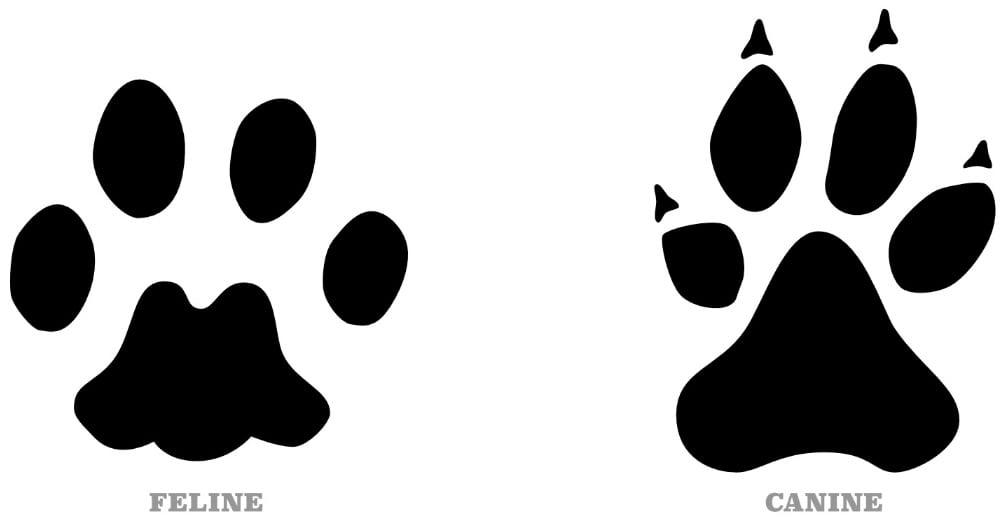
- Both prints have four toes arranged in front of a larger central pad
- Both prints are similarly sized with adult prints apx 2” in width
- Coyote prints are slightly larger — but size is also dependent on an animal’s age, so the size of a print is not always useful for identification
- Bobcats and coyotes are both perfect steppers: felines and canines use direct register to place their hind paws directly in the print left by their fore paws
- Why do animals direct register? Because, when hunting, it reduces the chances of making noise by 50%.
- Adult bobcats and coyotes are both solitary animals, so their tracks will typically be lone-animal tracks
Bobcat/Coyote Prints: Key Differences
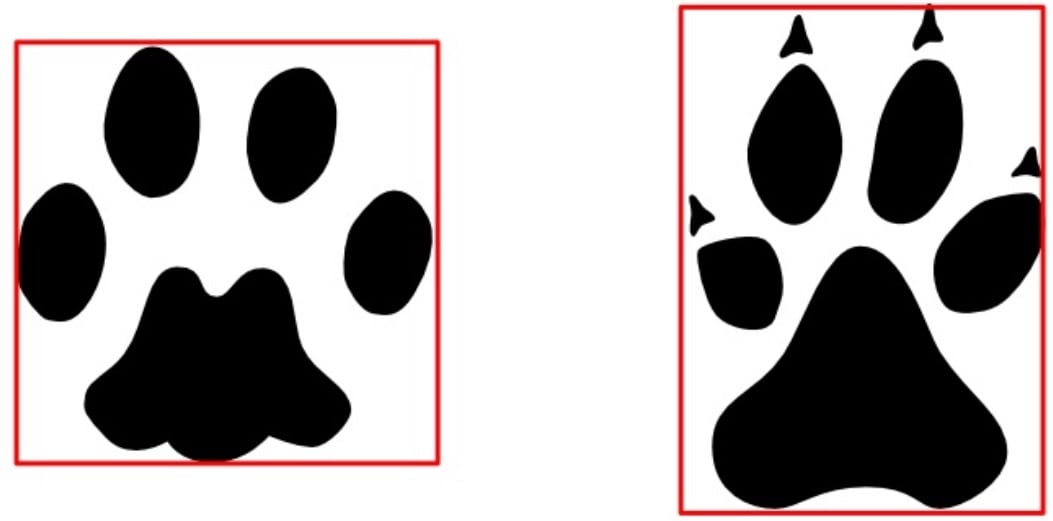
Shape
- Feline: The overall shape is pretty square
- Canine: The overall shape is a little rectangular (slightly taller than wide)
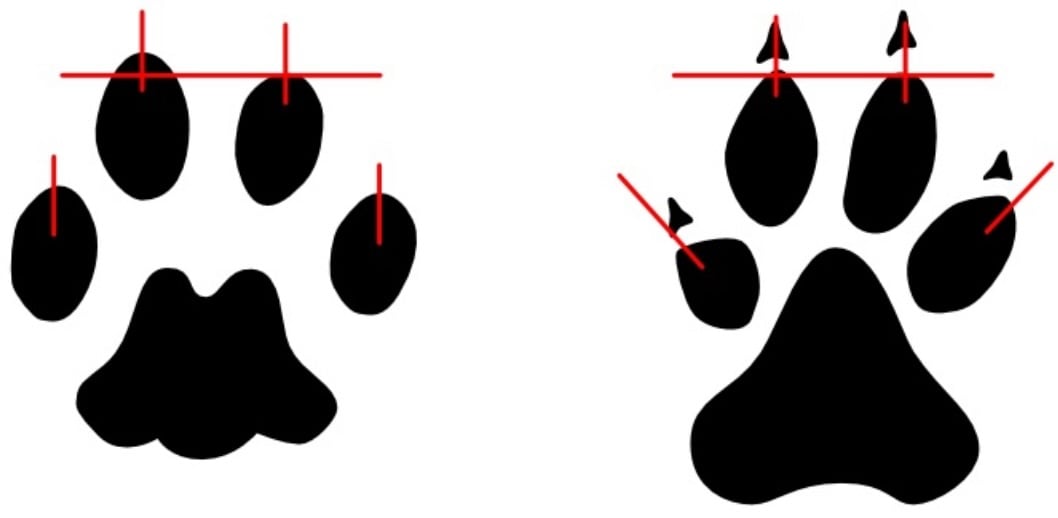
Toes
- Feline: one front toe is slightly ahead of the others
- Canine: both front toes are arranged symmetrically
- Feline: all toes point forward
- Canine: outer toes point outward
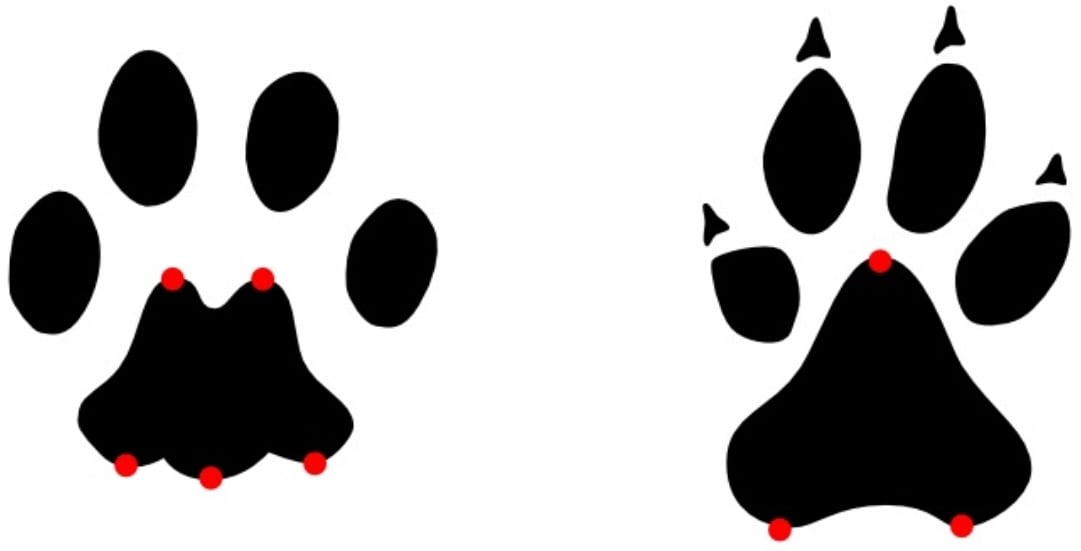
Lobes
- Feline: two lobes at top of the central pad
- Canine: one lobe at top of the central pad
- Feline: three lobes at bottom of the central pad
- Canine: two lobes at bottom of the central pad
I like to remember the difference by remembering that cats have many lives — and many more lobes on their palm and heel pads — than do dogs. Cats have 5 lobes in total. Dogs have only 3.
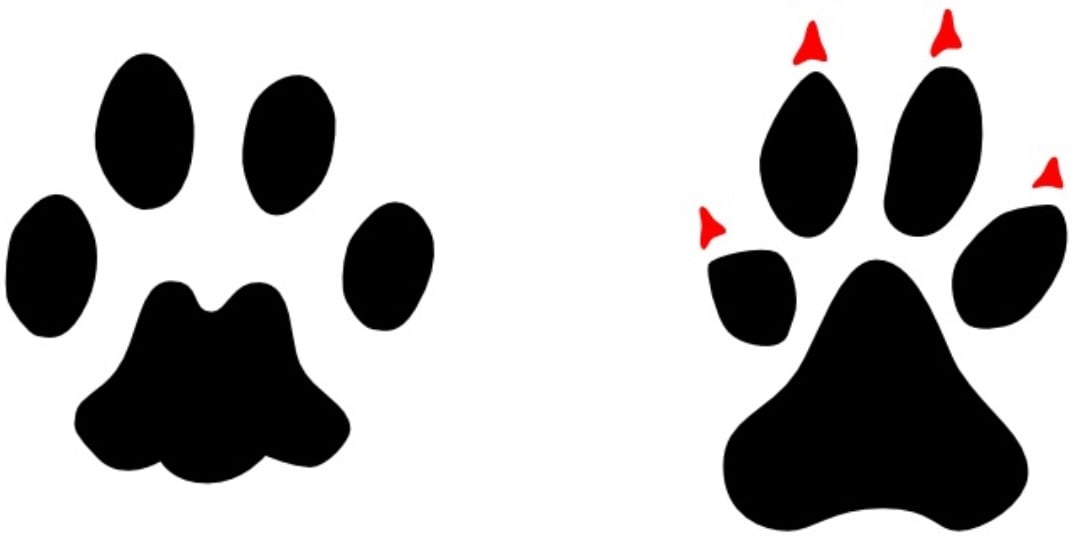
Claws
Cats retract their claws until needed, whereas a dog’s claws are always out. The presence of claw marks is one of the strongest differentiators in feline/canine print identification.
- Feline: no claws (except maybe very rarely)
- Canine: claws present (always)
Combining Clues
Taken all together — the overall shape of the print, the arrangement of the toes, the number of lobes, and the presence or absence of claws — in combination, these four clues will give you great confidence in your identification.
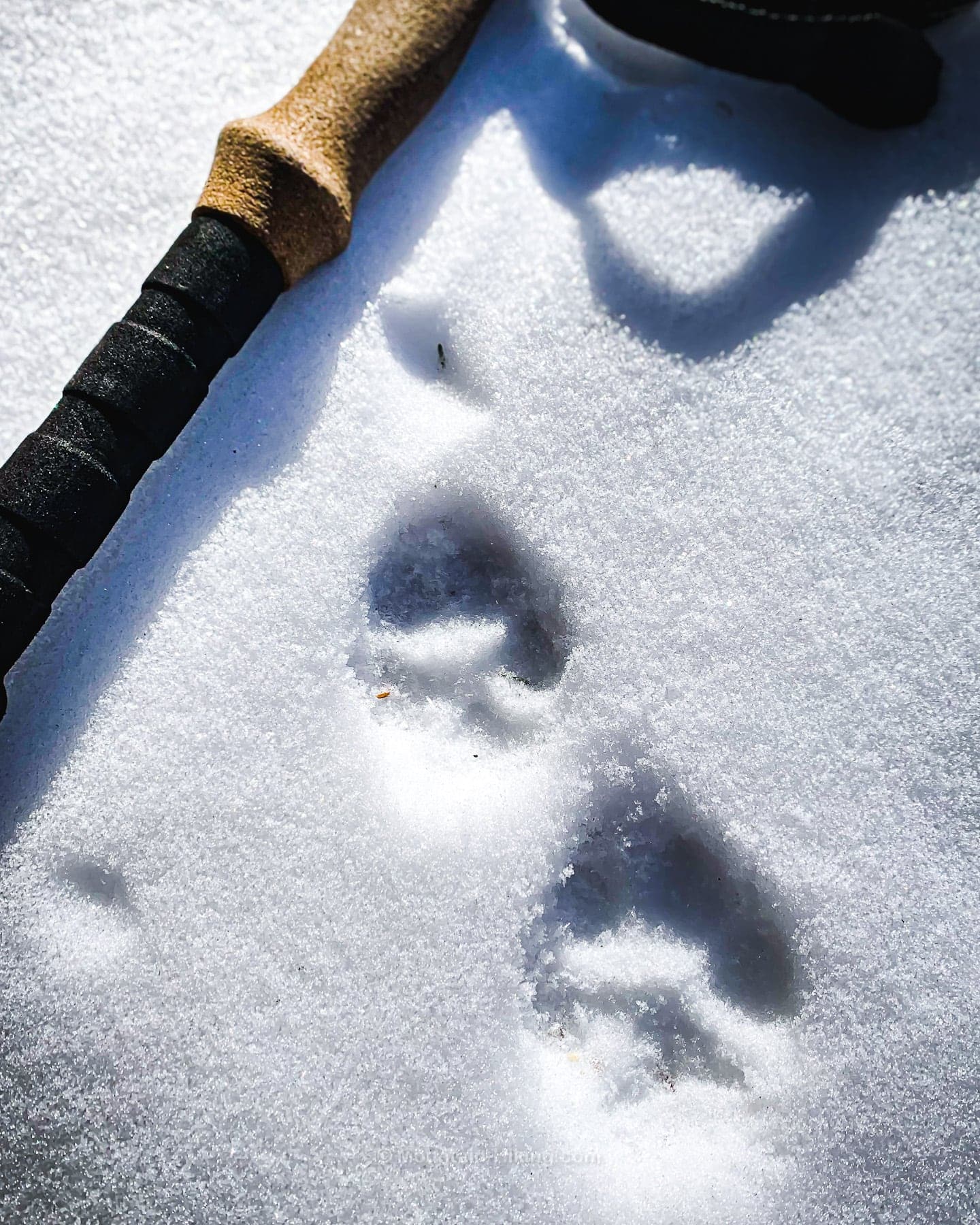
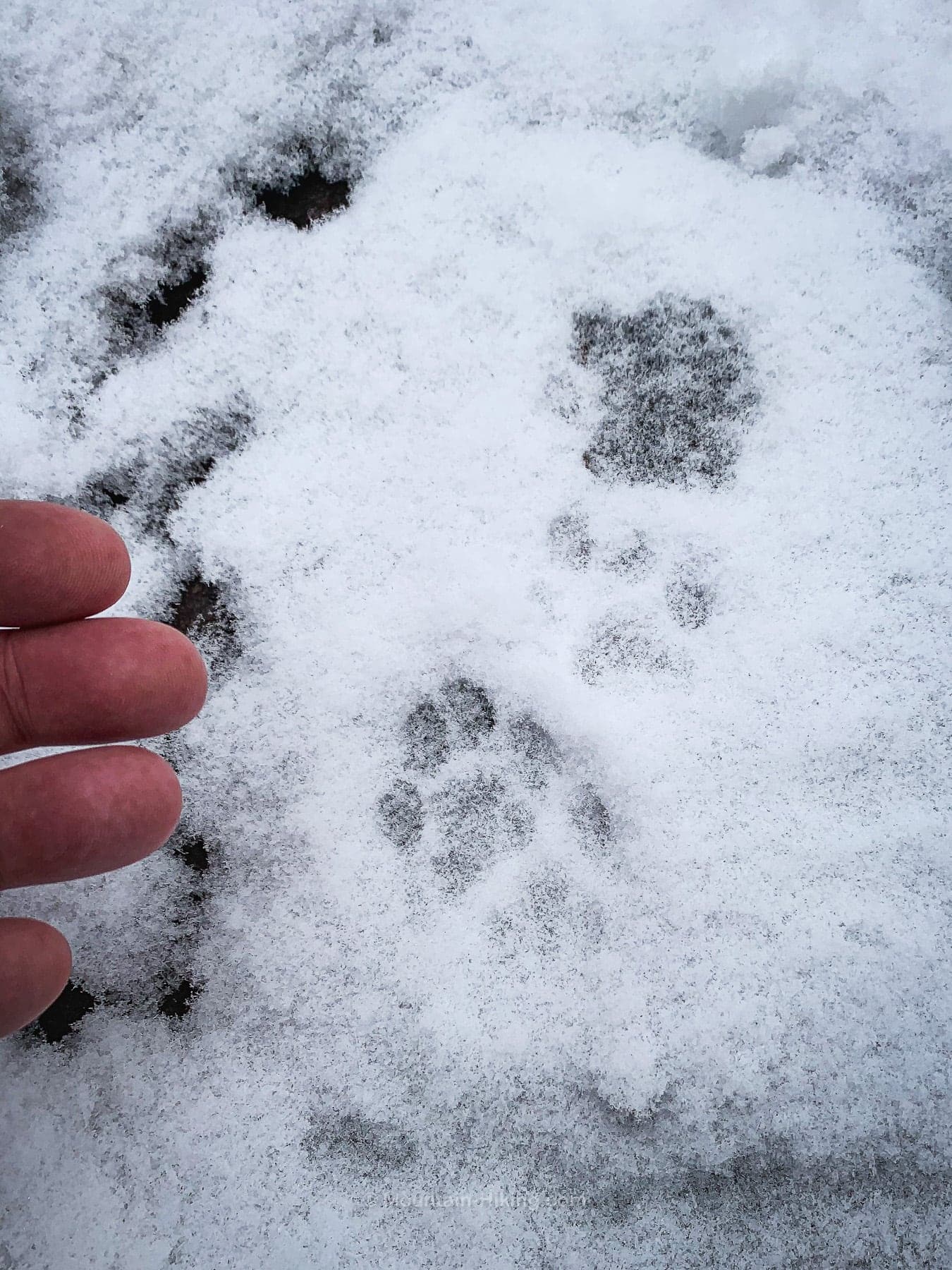
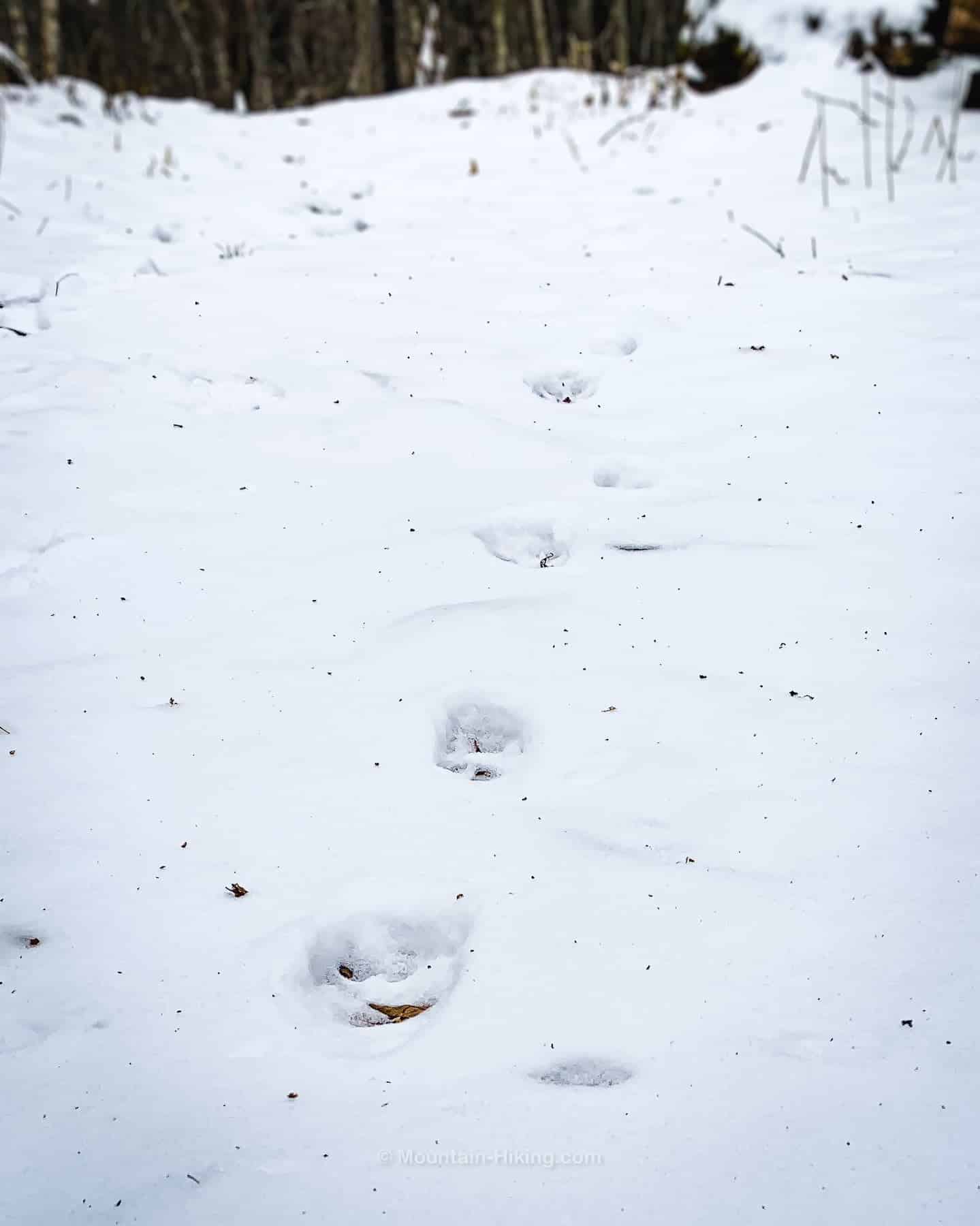
Coyote Tracks in Snow vs Domestic Dog Tracks
The easiest way to spot a domesticated dog track is notice how crazy it is. (Domesticated dog tracks are also normally accompanied by a human track.)
In the wild, all animals exist more-or-less in a state of permanent hunger. They are not keen to waste a single calorie or gram of body fat. The tracks of bobcats and coyotes tend to run in long, clean, uninterrupted lines. There are, essentially, on patrol or just moving efficiently between one area and another.
Get access to hyper-detailed trail guides, insider tips, and expert advice. Join a vibrant community of like-minded hikers, receive exclusive content, and embark on unforgettable outdoor adventures. Whether you’re a seasoned outdoor enthusiast or just starting out on your hiking journey, this website provides invaluable resources to help you explore the best trails in the Catskills, Adirondacks, Hudson Highlands, Berkshires, and beyond. Get access now to all content on this website instantly and enjoy unique supporter benefits.
Whereas, domesticated dogs are big dumb pampered kings and queens. They enjoy an endless supply of food, treats, warmth, comfort, play. Every single day! At the same time! In complete safety!
So domestic dog brains are wired, not for survival, but for fun. Their tracks betray this.
Domestic dog tracks run here and there, giddily, wherever their nose takes them — and, in the wild, their nose takes them everywhere.
If a coyote’s track were a piece of string, it would be pulled almost taut between two points. If a dog’s track were a length of anything, it would be, comparatively speaking, a hot mess of spaghetti noodle knots.
Get the Identification Poster
If you’d like all the above identification information in a single page printable poster, I have one available in my online store. It’s super clear and easy to read. Print as many as you need!
Bobcat Prints in Mud
The identification process outlined above can be used for identifying bobcat tracks in mud and bobcat prints in mud. Pay attention to the shape, lobes, toes and claws, and you’ll have no trouble telling bobcat prints from coyote prints.
Coyote Prints in Mud
The very same identification process can be used for identifying coyote tracks in mud and coyote prints in mud.
Read More
- Read How to Identify Bear Tracks in Snow
- Read 27 Unbeatable Tips for Winter Hikes
- Read Animal Tracks in Snow: How to Recognize Common Critters’ Prints (Backpacker)
Get full access…
Get instant access to the full version of this site and enjoy great supporter benefits: full galleries, full trail notes, early access to the latest content, and more.
Hot on the website right now…
Follow for more…
Follow my @TotalCatskills content on Instagram for regular hiking inspo and safe, inclusive community.
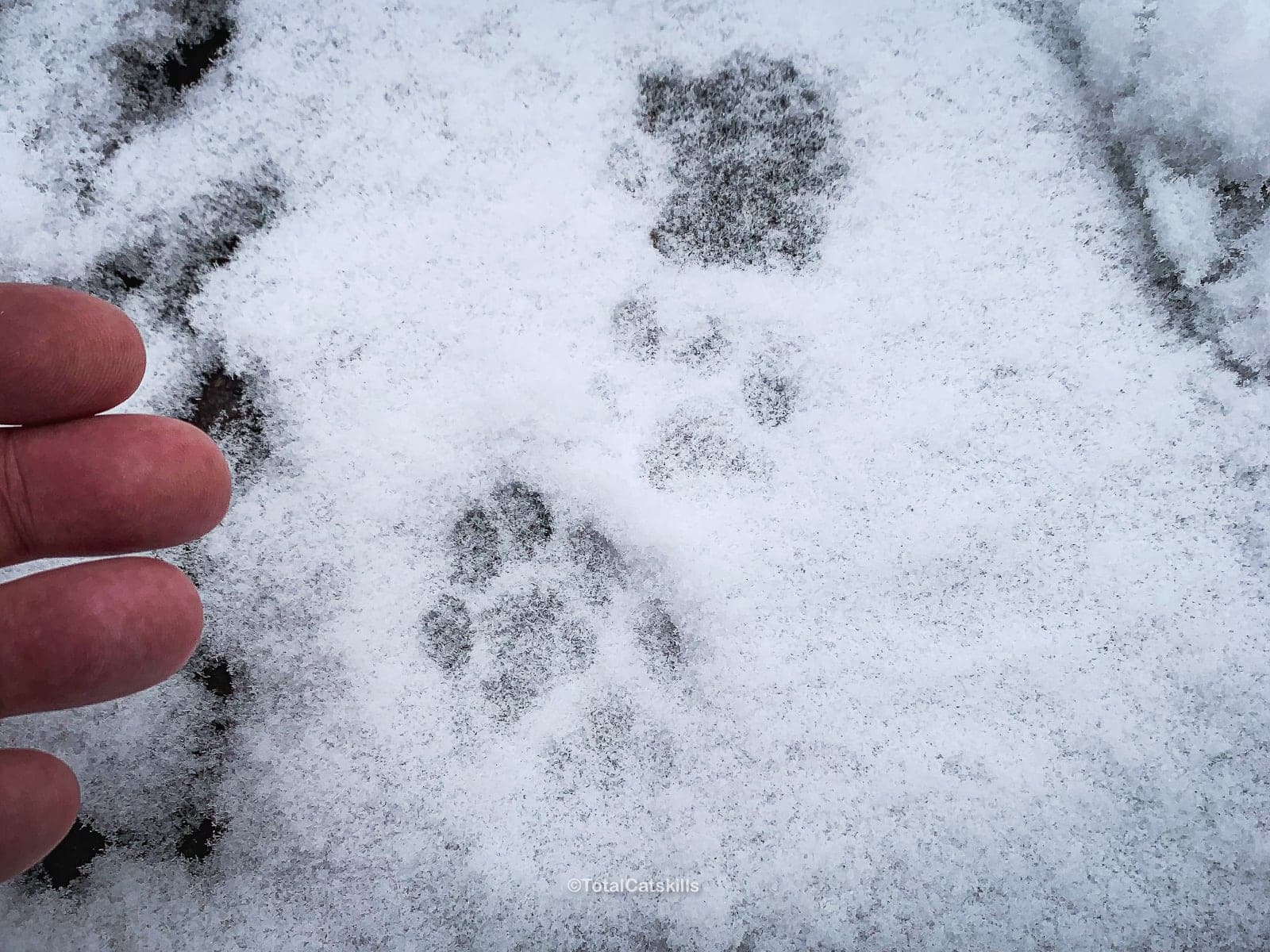

Thank you for this. My frenchie was going insane this morning sniffing around our floor. Turns out she’s not actually insane because when I went outside I found tracks in the fresh snow going directly under our house. Too big to be a house cat and because of your article I know it was a bobcat! My chickens are locked up so I have no problem giving him or her a little respite from our snowstorm.
That’s so great. IDing prints and tracks is so fun, and it never gets old.
thanks for the info on cat versus dog snow prints
Glad you found it useful!